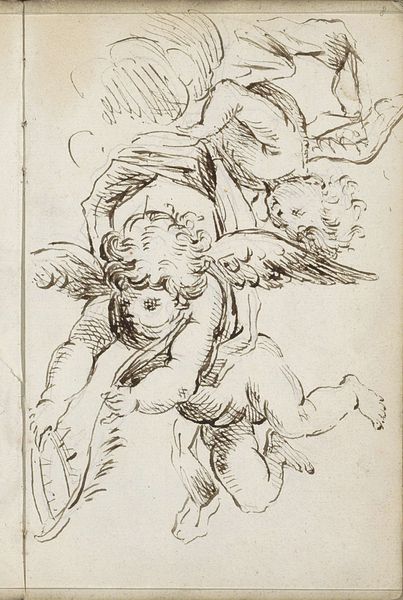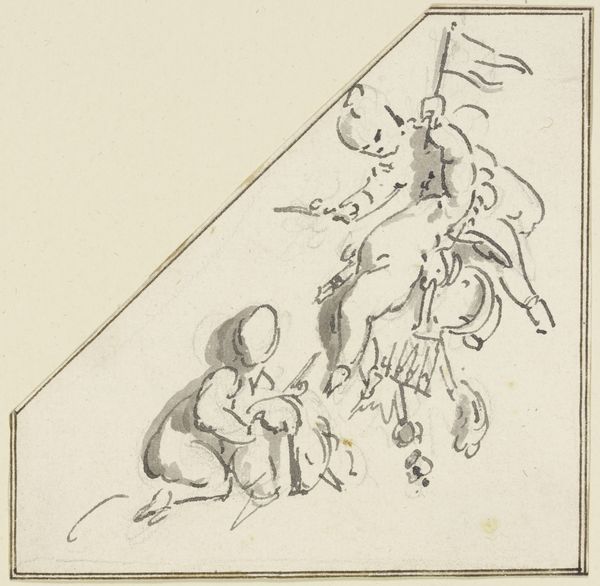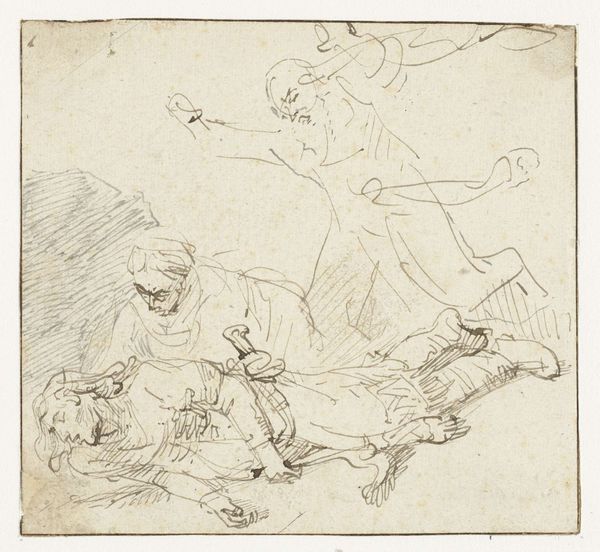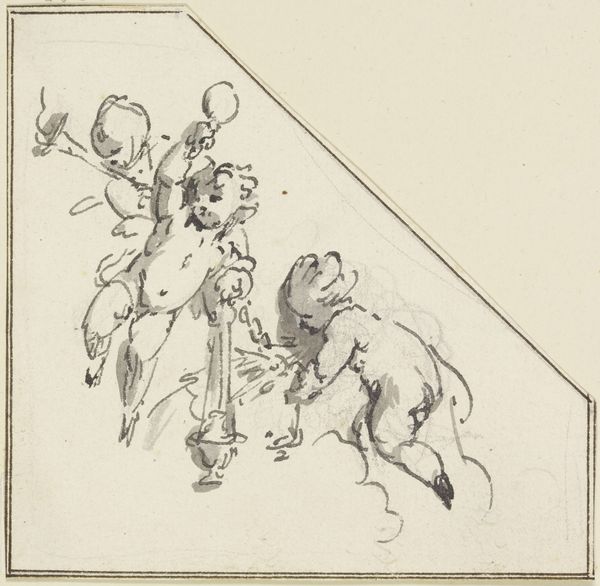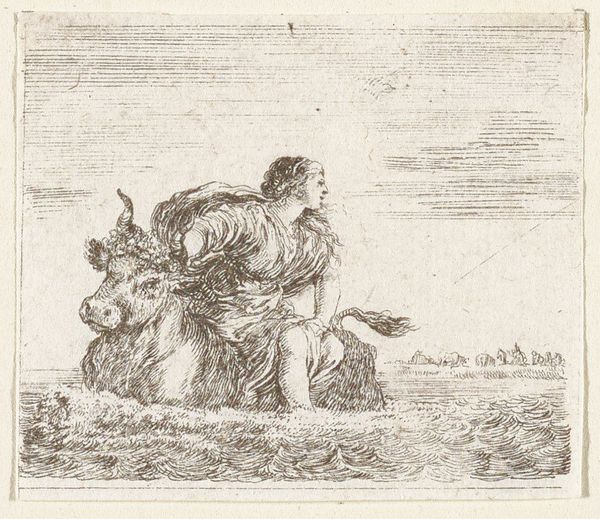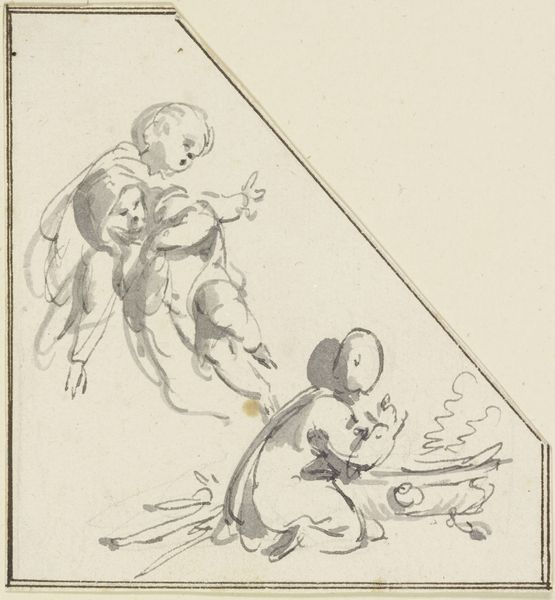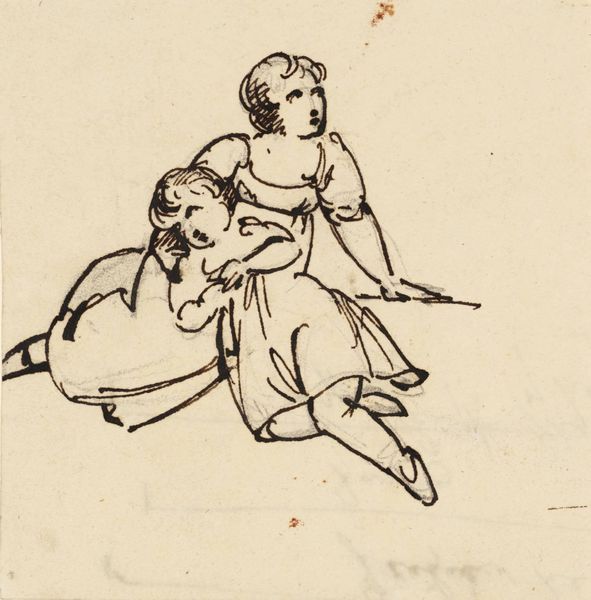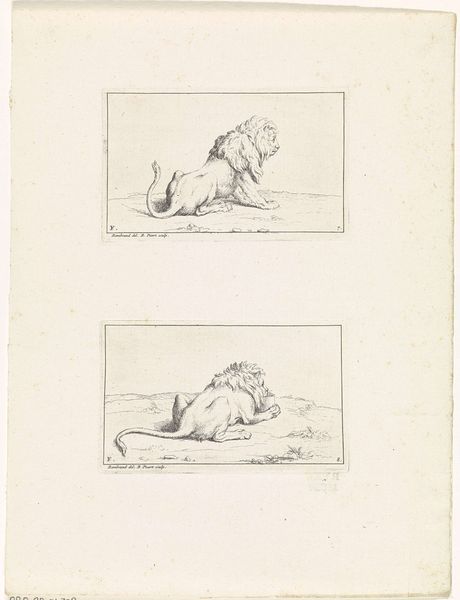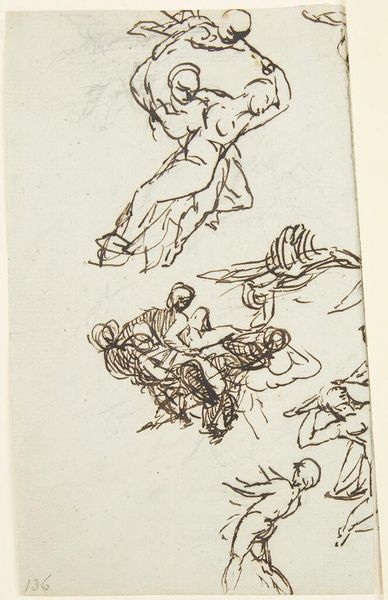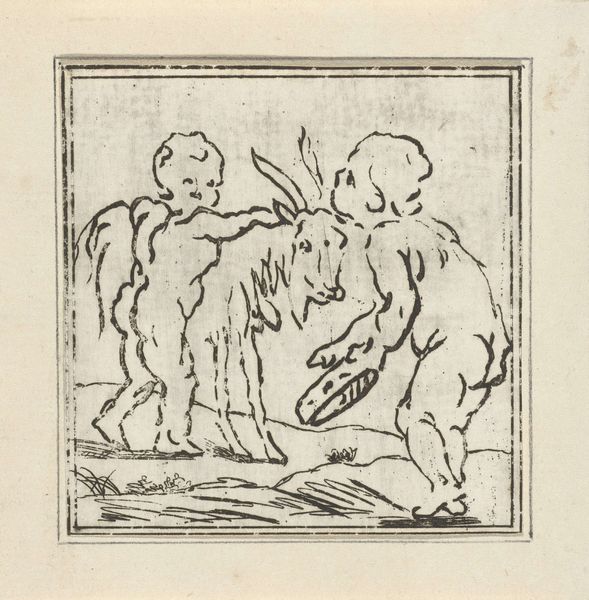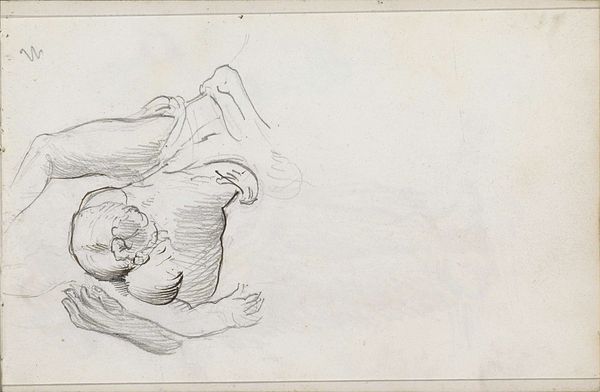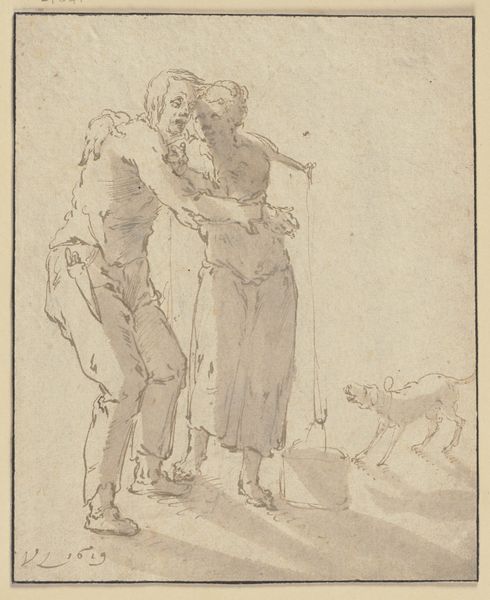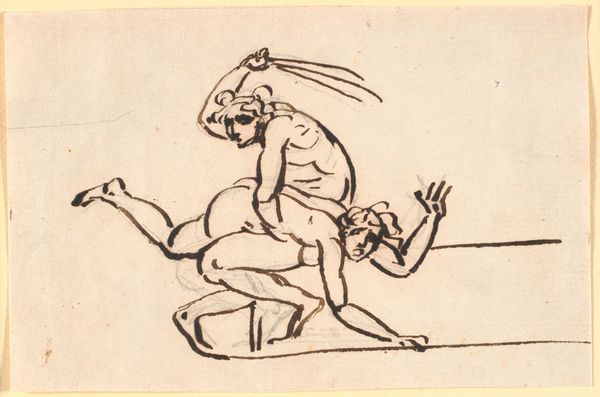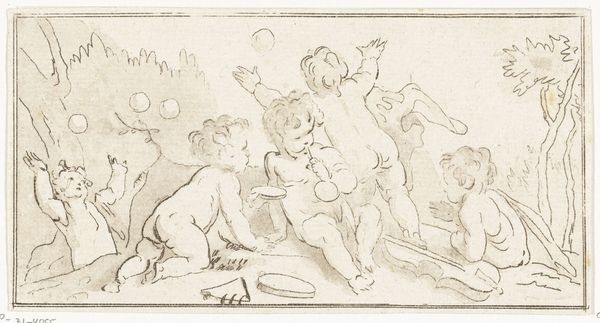
drawing, ink
#
drawing
#
baroque
#
figuration
#
ink
#
line
#
history-painting
Dimensions: height 163 mm, width 154 mm
Copyright: Rijks Museum: Open Domain
Curator: This drawing, rendered in ink, is Nicolaes Maes' "Kain doodt Abel," dating from about 1650 to 1660. Editor: Well, the first impression hits hard – primal, raw… almost feels like the essence of conflict boiled down to these frantic lines. The way they grapple, it's not just a fight, but an unburdening of some deep, dark agony. Curator: Yes, Maes encapsulates the quintessential fratricide from Genesis. We see Cain, weapon raised high, poised to strike Abel. It's more than just a historical scene; it embodies the origin of violence itself. Consider the image of Cain as an archetypal aggressor, fueled by envy and divine rejection. Abel becomes the emblem of innocence betrayed. This iconography persists through centuries. Editor: I'm caught by how off-kilter everything seems. Look at their bodies twisted like that – it really mirrors the emotional upheaval of the moment. There's no heroic posturing here, just the brutal intimacy of destruction. Also, notice that Maes has used lines of uneven thicknesses, which lends dynamism to this already very energetic depiction of murder. The medium, of course, emphasizes the starkness of the story. It has an unpolished feel, if that makes any sense. Curator: It does. It reminds us that linear depiction of a biblical narrative in baroque drawing traditions isn't always meant to provide realism, or accurate rendition. Here it might provide something more symbolic. For instance, how has sin infiltrated the bloodlines of humankind, marking its commencement? I feel that Maes conveys something almost existential here, no? Editor: Absolutely. And you know, despite its brevity, the drawing stays with you. We're drawn into this very first drama from the Bible. You can almost sense the rage – primal rage but still pure grief over being sidelined by divine affection. The kind of feeling that gets carried within for, oh, ever? Curator: Precisely. Its visual language touches on those themes of loss, betrayal, resentment that resonate profoundly across time. Editor: So, a small drawing about something astronomically big: how envy breeds our monsters. Food for thought, really. Curator: A somber note on which to contemplate the weight of history and its psychological echoes within us.
Comments
No comments
Be the first to comment and join the conversation on the ultimate creative platform.
